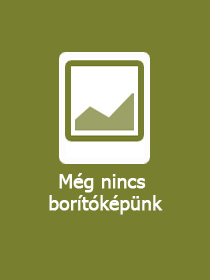
Introduction to Regression Methods for Public Health Using R
-
10% KEDVEZMÉNY?
- A kedvezmény csak az 'Értesítés a kedvenc témákról' hírlevelünk címzettjeinek rendeléseire érvényes.
- Kiadói listaár GBP 89.99
-
45 543 Ft (43 375 Ft + 5% áfa)
Az ár azért becsült, mert a rendelés pillanatában nem lehet pontosan tudni, hogy a beérkezéskor milyen lesz a forint árfolyama az adott termék eredeti devizájához képest. Ha a forint romlana, kissé többet, ha javulna, kissé kevesebbet kell majd fizetnie.
- Kedvezmény(ek) 10% (cc. 4 554 Ft off)
- Discounted price 40 989 Ft (39 038 Ft + 5% áfa)
45 543 Ft

Beszerezhetőség
Becsült beszerzési idő: A Prosperónál jelenleg nincsen raktáron, de a kiadónál igen. Beszerzés kb. 3-5 hét..
A Prosperónál jelenleg nincsen raktáron.
Why don't you give exact delivery time?
A beszerzés időigényét az eddigi tapasztalatokra alapozva adjuk meg. Azért becsült, mert a terméket külföldről hozzuk be, így a kiadó kiszolgálásának pillanatnyi gyorsaságától is függ. A megadottnál gyorsabb és lassabb szállítás is elképzelhető, de mindent megteszünk, hogy Ön a lehető leghamarabb jusson hozzá a termékhez.
A termék adatai:
- Kiadás sorszáma 1
- Kiadó Chapman and Hall
- Megjelenés dátuma 2024. december 19.
- ISBN 9781032203072
- Kötéstípus Keménykötés
- Terjedelem456 oldal
- Méret 254x178 mm
- Súly 1000 g
- Nyelv angol
- Illusztrációk 68 Illustrations, black & white; 45 Illustrations, color; 68 Line drawings, black & white; 45 Line drawings, color; 27 Tables, black & white 672
Kategóriák
Rövid leírás:
This book teaches regression methods for continuous, binary, ordinal, and time-to-event outcomes using R as a tool. Regression is a useful tool for understanding the associations between an outcome and a set of explanatory variables, and regression methods are commonly used in many fields.
TöbbHosszú leírás:
Introduction to Regression Methods for Public Health Using R teaches regression methods for continuous, binary, ordinal, and time-to-event outcomes using R as a tool. Regression is a useful tool for understanding the associations between an outcome and a set of explanatory variables, and regression methods are commonly used in many fields, including epidemiology, public health, and clinical research. The focus of this book is on understanding and fitting regression models, diagnosing model fit, and interpreting and writing up results. Examples are drawn from public health and clinical studies. Designed for students, researchers, and practitioners with a basic understanding of introductory statistics, this book teaches the basics of regression and how to implement regression methods using R, allowing the reader to enhance their understanding and begin to grasp new concepts and models.
The text includes an overview of regression (Chapter 2); how to examine and summarize the data (Chapter 3), simple (Chapter 4) and multiple (Chapter 5) linear regression; binary, ordinal, and conditional logistic regression, and log-binomial regression (Chapter 6); Cox proportional hazards regression (survival analysis) (Chapter 7); handling data arising from a complex survey design (Chapter 8); and multiple imputation of missing data (Chapter 9). Each chapter closes with a comprehensive set of exercises.
Key Features:
- Comprehensive coverage of the most commonly used regression methods, as well as how to use regression with complex survey data or missing data
- Accessible to those with only a first course in statistics
- Serves as a course textbook, as well as a reference for public health and clinical researchers seeking to learn regression and/or how to use R to do regression analyses
- Includes examples of how to diagnose the fit of a regression model
- Includes examples of how to summarize, visualize, table, and write up the results
- Includes R code to run the examples
Tartalomjegyzék:
Preface 1. Introduction 2. Overview of Regression Methods 3. Data Summarization 4. Simple Linear Regression 5. Multiple Linear Regression 6. Binary Logistic Regression 7. Survival Analysis 8. Analyzing Complex Survey Data 9. Multiple Imputation of Missing Data Appendix A. Datasets Bibliography Index
Több










